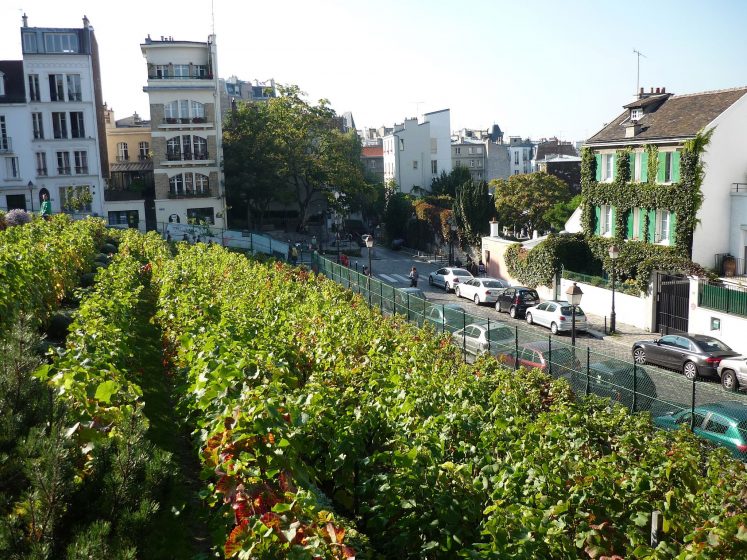The Best Guide To City Blooming
The Best Guide To City Blooming
Blog Article
The smart Trick of City Blooming That Nobody is Discussing
Table of ContentsLittle Known Questions About City Blooming.The 5-Second Trick For City BloomingThe Basic Principles Of City Blooming What Does City Blooming Mean?Getting The City Blooming To Work
Interested in growing food up for sale in the City of Chicago? Considering beginning a community yard? Modifications to the Chicago Zoning Regulation permit agricultural usages like area gardens and metropolitan farms in many components of the city. Below is a checklist of frequently asked inquiries relating to the policies and regulations that cultivators need to think about when preparing an urban farming task.
The zoning amendment does not customize any type of various other codes handling composting, structure permits, acquiring or leasing City owned residential or commercial property, business licenses or environmental contamination. There are existing codes that regulate these issues and they remain completely impact and might apply to your job. Area yards are usually owned or taken care of by public entities, civic organizations or community-based organizations and kept by volunteers.
Urban farms expand food that is meant to be offered, either on a nonprofit or for-profit basis. As a result of their industrial objective, urban ranches require a business certificate. Yes. A community garden is allowed to offer surplus generate that was expanded on site if the sales are accessory or secondary to the yard's primary objective explained over.
How City Blooming can Save You Time, Stress, and Money.
The amount of compost material can not exceed 25 cubic backyards at any kind of given time according to the standards in 7-28-715 of the City's Municipal Code. Because the soil at most brand-new garden sites requires amending, garden compost, soil, timber chips, or other materials can be obtained to build or improve the expanding area.

If a structure permit is required then the hoophouse will be thought about an accessory structure. You can discover even more concerning the structure license requirements by speaking to the Department of Buildings. The 25,000-square-foot size limit is planned to avoid a solitary neighborhood yard from controling an offered block or diminishing the block's existing property or business personality.
The limit does not apply to gardens situated in Public Open Room (POS) areas. Can there be more than one area yard that is 25,000 square feet on a single block? Fence is not called for, nevertheless, yards that have huge auto parking locations might be required to set up fence or other landscaping features.
The Main Principles Of City Blooming
B1 & B2 districts call for that all industrial use activities be carried out inside your home. R areas restrict business activity. The policies reflect the objective and intent of the Zoning Code. Is secure fencing needed for metropolitan ranches? Yes. Fences might be required, together with landscape design and testing, for sure parking lot and exterior work or storage space areas depending upon place and the particular activity occurring.
Urban farms need structure permits and zoning authorizations prior to construction (home and garden). Various other forms of city review might be required depending on particular frameworks, activities, size, landscaping, licensing, public health and stormwater monitoring issues.
The Division of Service Affairs and Consumer Defense can aid figure out the details kind of business certificate that's required. Off street auto parking is needed for a lot of commercial projects in Chicago. The required number of parking areas is based on the number of employees functioning on site and not the square footage of the growing room.
The Facts About City Blooming Uncovered

Yes. A metropolitan ranch can sell compost product created on website, however, the operation has to follow the policies in 7-28-715 of the Chicago Municipal Code. Yes. Aquaponic systems are permitted inside your home on urban ranches in lots of zoning districts. Nonetheless, a zoning evaluation and building authorization is needed in order to set up frameworks or systems and a company license is needed as described above.
Up to 5 hives or nests of honey bees may be kept as an accessory usage. Nevertheless, beekeepers have to register with the Illinois Department of Agriculture. For even more info about the recommended zoning modification you may contact the Division of Housing and Economic Growth, Bureau of Planning and Zoning at 312.744.8563.
Farming in cities and city locations An urban farm in Chicago. Urban agriculture describes numerous practices of growing. https://experiment.com/users/cityblooming, handling, and distributing food in urban locations. The term likewise relates to the area see activities of pet husbandry, aquaculture, beekeeping, and gardening in a metropolitan context. Urban agriculture is identified from peri-urban farming, which happens in backwoods at the side of suburban areas.
The 25-Second Trick For City Blooming
, who look for to form social networks founded on a common principles of nature and area holism. These networks can establish by way of formal institutional assistance, ending up being integrated into neighborhood community planning as a "transition community" motion for lasting urban development.
In either instance, the much more straight accessibility to fresh veggie, fruit, and meat items that may be become aware with urban agriculture can enhance food safety and security and food security while reducing food miles, bring about lower greenhouse gas emissions, therefore adding to environment change mitigation. A few of the very first proof of metropolitan farming originates from Mesopotamia.
Report this page